This year the weather looked very promising, a little rain in the morning and a lot of sunshine and a few clouds during the rest of the day. These are the basic ingredients we needed for an excellent Flying Legends.
The air show started with the Spitfire F VB BM597, the Spitfire F IX MH434 (also used by the Belgian Air Force at the Advanced Pilot School Koksijde and the 13th Wing at Brustem during the fifties) and the Spitfire F IXE PL344.
Their typical engine sound is always very nice to hear.
Their typical engine sound is always very nice to hear.
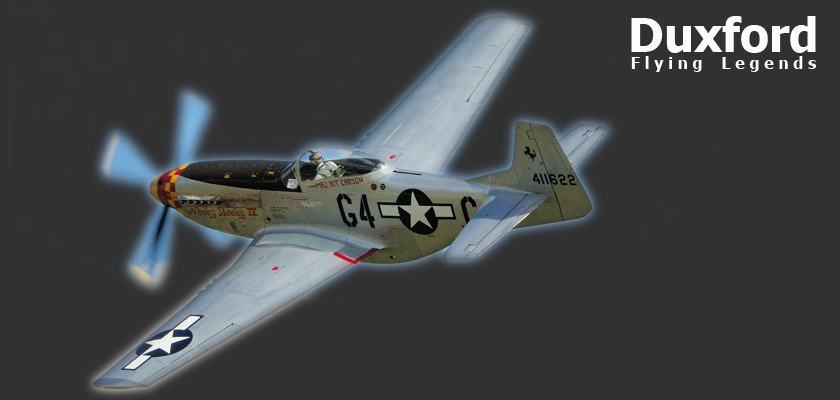
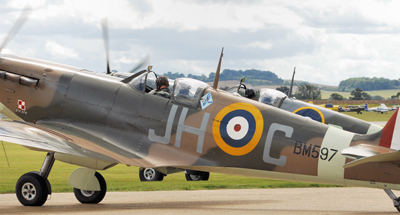
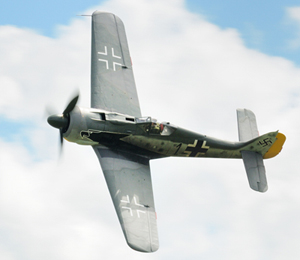
Special act this year were the replicas of the Focke-Wulf 190s, the French version F-AZZJ filled the sky while the other, owned by Spitfire Ltd, stayed on the ground.
These Fw190s were well-liked by their pilots.
The design was the last mass produced piston-engine German fighter to see in action in the war. It soon showed exceptional qualities for such a comparatively small aircraft, with excellent handling, good visibility and speed.
These Fw190s were well-liked by their pilots.
The design was the last mass produced piston-engine German fighter to see in action in the war. It soon showed exceptional qualities for such a comparatively small aircraft, with excellent handling, good visibility and speed.
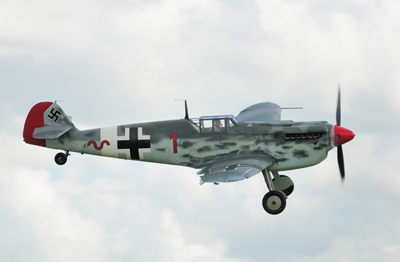
Then it was time for the HA-1112-M1L Buchon. Buchon is both a male dove or a pelican in Spanish. But the name comes from the deep chin intake of the engine.
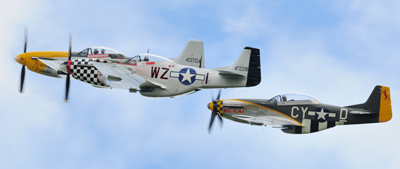
Followed by a unique formation of three P-51D Mustangs, flown by a display team called ‘The Horseman’, Dan Friedkin, Jim Beasley and Ed Shipley.
For this occasion they didn’t use their usual Mustangs, but the Mustangs of the Flying Legends : ‘Big Beautiful Doll’, ‘Miss Velma’ and the ‘Ferocious Franky’.
For this occasion they didn’t use their usual Mustangs, but the Mustangs of the Flying Legends : ‘Big Beautiful Doll’, ‘Miss Velma’ and the ‘Ferocious Franky’.
Three North American B-25 Mitchell bombers filled the sky, and the sound of their Wright R-2600 Cyclone radial engines are really heavenly. The Mitchell II KL 161 Grumpy based at Duxford was sold to Paul Allen’s Flying Heritage Collection in Seattle and will return to Seatle in autumn. The Mithell J-20 from the Netherlands Historic Flight (RNAF) and the Mitchell J-35 based at La Ferté -Alais in France.
Normally three Yak’s had to give a demonstration of their aerobatic capabilities, but one of them, the Yak 9UM, had technical problems. A bad debut, because it was it first time at Duxford.
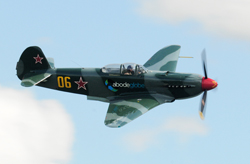
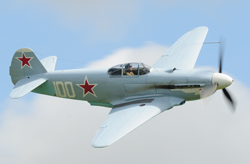

The French Douglas Skyraider flown by Jean Salis joined the Skyraider of Kennet Aviation. This Skyraider is an American single seat attack bomber of the 50’s, 60’s and the early 70’s.
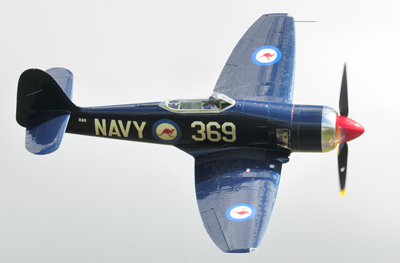
The Fury ISS flown by a French airline pilot Frederic Akary, and the Sea Fury T20. The T20 is not a stranger in the sky of the UK.
The start of its UK career was in Cumbria in 1951, transferred to RNAS Eglinton Ireland, sold to German Federal Government, returned to RNAS Yeovilton as a gift. Then repainted in the original Eglinton colours and markings, crashed during a flight from RNAS Yeovilton to Silverstone for a display, sent to the USA for restoration, shipped back to the UK in May 2009, and now ready for his display in the Flying Legends.
The start of its UK career was in Cumbria in 1951, transferred to RNAS Eglinton Ireland, sold to German Federal Government, returned to RNAS Yeovilton as a gift. Then repainted in the original Eglinton colours and markings, crashed during a flight from RNAS Yeovilton to Silverstone for a display, sent to the USA for restoration, shipped back to the UK in May 2009, and now ready for his display in the Flying Legends.
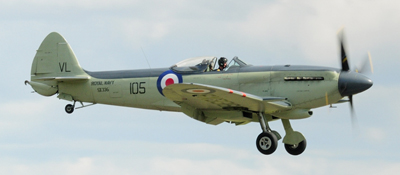
The Sea Fire, a navalised version of the Supermarine Spitfire, was one of the last piston-engined aircraft to be used by the Royal Navy, before the jet-powered types such as the Sea Hawk arrived.
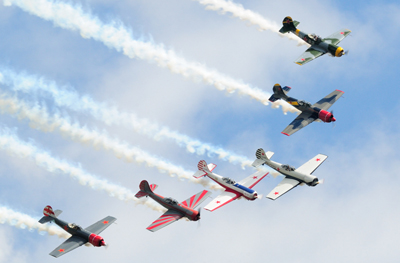
The Aerostars remain the largest civilian team in the UK with 6 Yak aircrafts.
The display also featured aerobatics by smaller elements of the team. Complex vertical aerobatics, opposition passes and figures, and gyroscopic maneuvers were flown by 3 and 2 aircraft formations.
In addition, the soloist demonstrated the power, grace and vertical abilities of the Yak 50.
The display also featured aerobatics by smaller elements of the team. Complex vertical aerobatics, opposition passes and figures, and gyroscopic maneuvers were flown by 3 and 2 aircraft formations.
In addition, the soloist demonstrated the power, grace and vertical abilities of the Yak 50.

The B-17G-85-VE Flying Fortress is now operated by the ‘Association Fortresse Toujours Volant en France’ and is a regular attendee of the Flying Legends event.

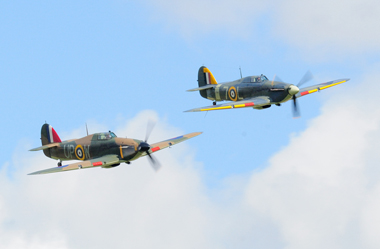
Now the ‘Battle of Britain Memorial Flight’ consisted in a Lancaster and 2 Hurricane’s.
The Lancaster is one of only two Lancasters remaining in airworthy condition out of the 7377 that were built, the other being in Canada. The Hurricane is one of the classic fighters of all time. It was designed and built for war.
The Messerschmitt BF108, a German single-engine sports and touring aircraft developed by Bayerische Flugzeugwerke, is an all-metal construction. Several Bf 108s had set endurance records.
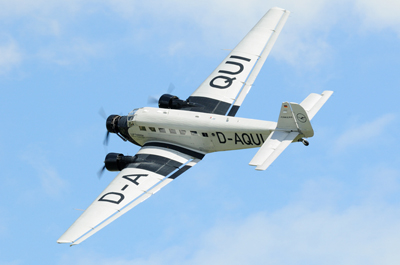
The Junker 52 , also called the “Tante Ju”, "Auntie Ju" and "Iron Annie", used for both civilian as well as military purpose, sometimes even as a bomber.

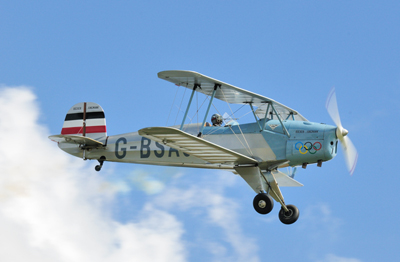
The demonstration of Anna Walker with her Jungmann G-BSAJ.
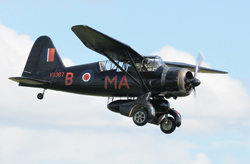
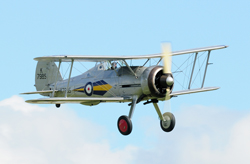
The Lysander 's exceptional short-field performance made clandestine missions behind enemy lines possible, that placed or recovered agents.
The Gloster Gladiator and the Westland Lysander of the Shuttleworth.
The Gladiator was to be the last British biplane fighter and their first fighter with an enclosed cockpit.
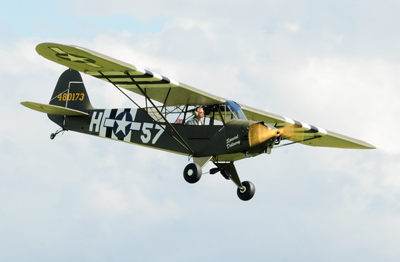
The Piper Cub, a light intermezzo, was intended for flight training but became one of the most popular and best-known light aircraft of all time.
Then a demonstration of the aerobatic capabilities of the Fokker Dr I replicas
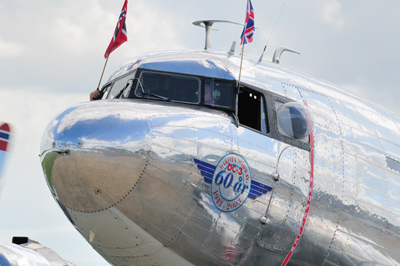
Dakota C-53D 42-68823 of Foundation Dakota Norway
Technically this aircraft is not a Dakota although now it is practically identical.
Dakota was the name given by the RAF to several variants of the Douglas C-47 Skytrain.
This aircraft was built as a Douglas C-53D Skytrooper and never saw RAF service. It was civilianised to DC-3 standard and is now operated by Foundation Dakota Norway
Technically this aircraft is not a Dakota although now it is practically identical.
Dakota was the name given by the RAF to several variants of the Douglas C-47 Skytrain.
This aircraft was built as a Douglas C-53D Skytrooper and never saw RAF service. It was civilianised to DC-3 standard and is now operated by Foundation Dakota Norway
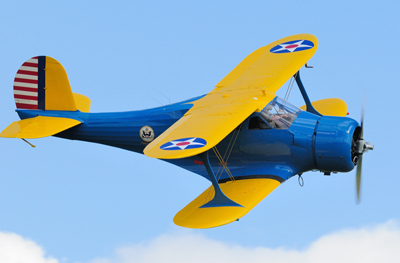
The Dutch Beech YC-43 Staggerwing was a newcomer at the Flying Legends, in the past used as a light liaison aircraft.
This biplane features negatively staggered wings : the lower wing is forward of the upper wing.
This biplane features negatively staggered wings : the lower wing is forward of the upper wing.

The Morane D-3801, built in Switzerland, developed from the MS405.
This MS405 was ordered by the French Government when the Nazis became a real threat.
This MS405 was ordered by the French Government when the Nazis became a real threat.
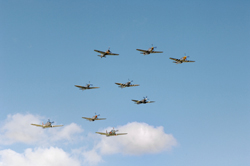
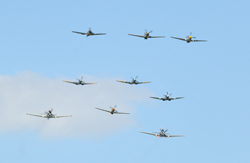
The grand final was a combination of all the “old” airplanes that flew already during this air show : Spitfires, Mustangs, Hurricanes, ....
Please take a look in the "Archive Foto Reports" section, for more pictures of this event !







